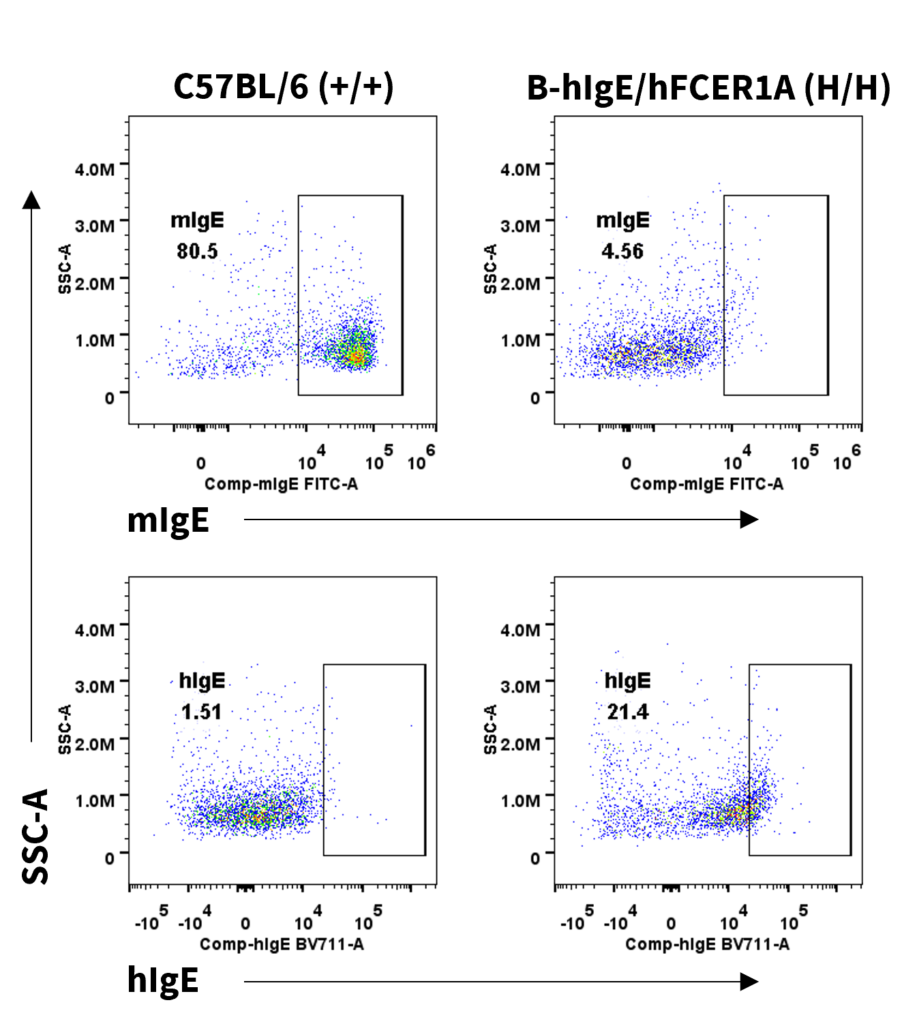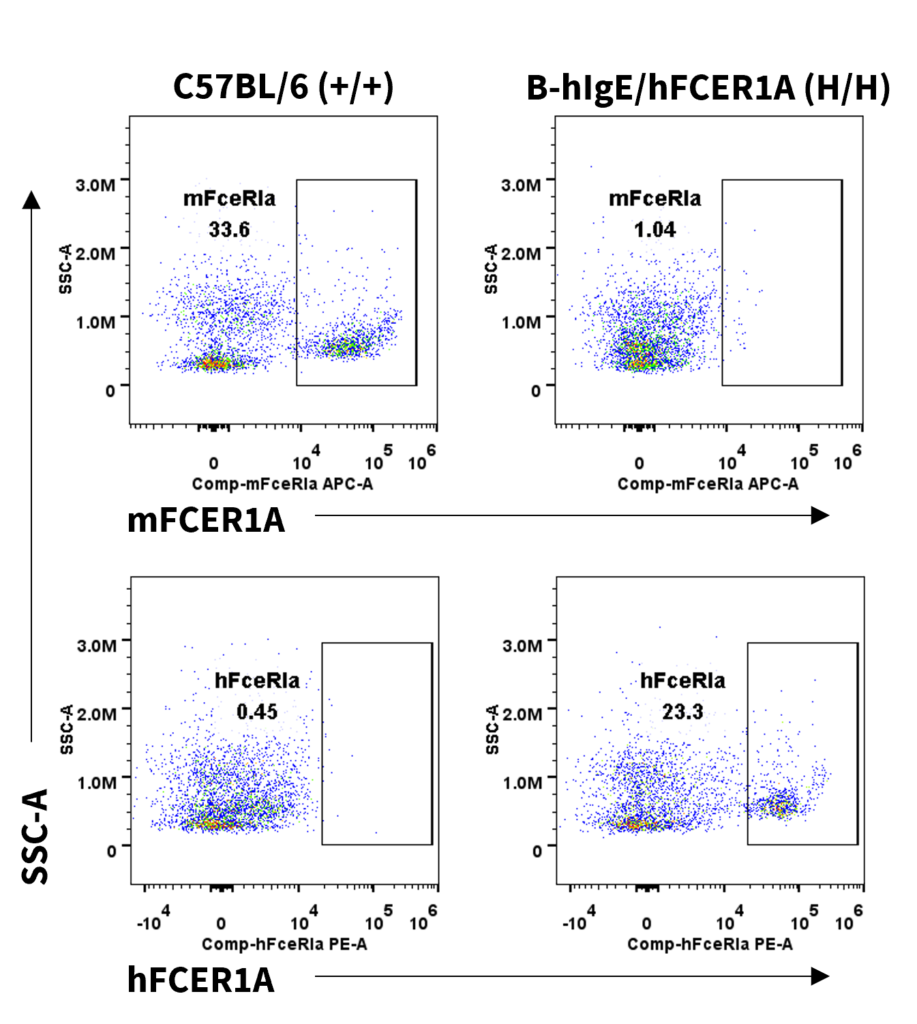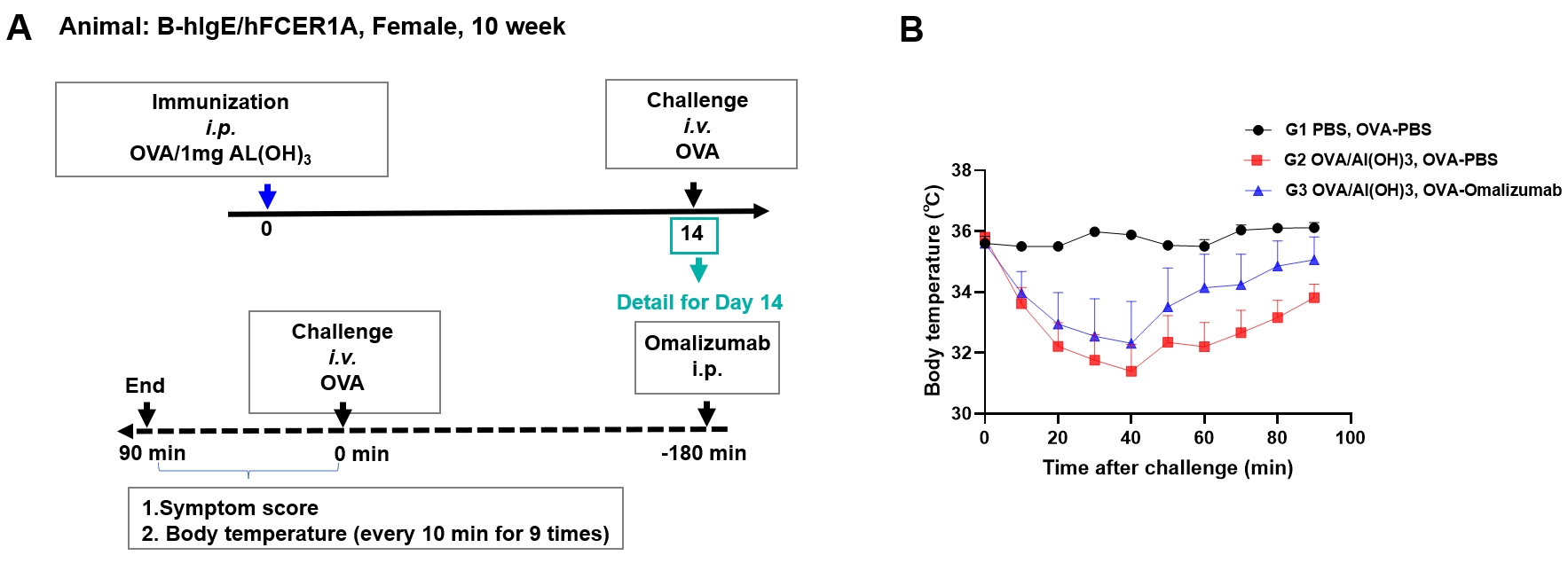Basic Information
-
Gene targeting strategy

-
Gene targeting strategy for B-hIgE/hFCER1A mice.
The exons 1-6 of mouse Ighe gene that encode the full-length protein of heavy chain constant region were replaced by human IGE exon 1-6 in B-hIgE/hFCER1A mice.
The exons 1-5 of mouse Fcer1a gene that encode the extracellular domain were replaced by human FCER1A exons 3-7 in B-hIgE/hFCER1A mice.
-
Protein expression analysis in basophils

-

Strain specific IgE expression analysis in homozygous B-hIgE/hFCER1A mice by flow cytometry.
Basophilic granulocytes of the bone marrow were collected from wild-type C57BL/6 mice (+/+) and homozygous B-hIgE/hFCER1A mice (H/H;H/H) stimulated with LPS in vivo, and analyzed by flow cytometry with species-specific anti-IgE antibody. Mouse IgE was detectable in WT mice (+/+). Human IgE was exclusively detectable in homozygous B-hIgE/hFCER1A mice (H/H;H/H) but not in WT mice (+/+).

Strain specific FCER1A expression analysis in homozygous B-hIgE/hFCER1A mice by flow cytometry.
Basophilic granulocytes of the bone marrow were collected from wild type (WT) mice (+/+) and homozygous B-hIgE/hFCER1A mice (H/H;H/H), and analyzed by flow cytometry with species-specific anti-FCER1A antibody. Mouse FCER1A was detectable in WT mice (+/+). Human FCER1A was exclusively detectable in homozygous B-hIgE/hFCER1A mice (H/H;H/H) but not in WT mice (+/+).
-
Omalizumab alleviated OVA induced active systemic anaphylaxis (ASA) in B-hIgE/hFCER1A mice

-

Effects of Omalizumab on OVA induced ASA. B-hIgE/hFCER1A mice (H/H; H/H) received OVA/Al(OH)3 immunization on day 0, and challenge with OVA on day 14. Omalizumab (in house) was injected 3 hour before challenge on day 14. (A) The body temperature of the mice was recorded from 0 to 90 minutes after the challenge. (B) An increasing trend was produced by Omalizumab (in house) in the ASA model. It can be seen that Omalizumab (in house) has an inhibitory effect on the decrease in body temperature caused by ASA modeling in B-hIgE/hFCER1A mice (H/H; H/H).
-
Summary

-
Protein expression analysis:
Mouse IgE and FCER1A were detectable in WT mice (+/+). Human IgE and FCER1A were exclusively detectable in homozygous B-hIgE/hFCER1A mice (H/H;H/H) but not in WT mice (+/+).
In vivo efficacious:
Omalizumab (in house) has an inhibitory effect on the decrease in body temperature caused by ASA modeling in B-hIgE/hFCER1A mice (H/H; H/H).


